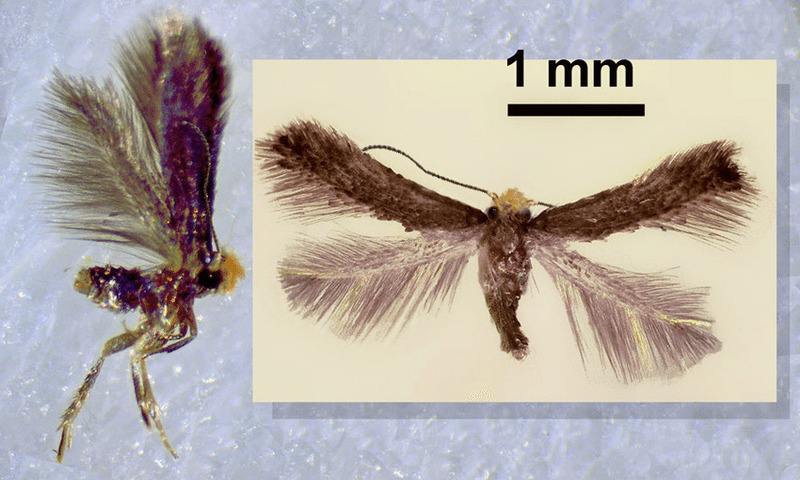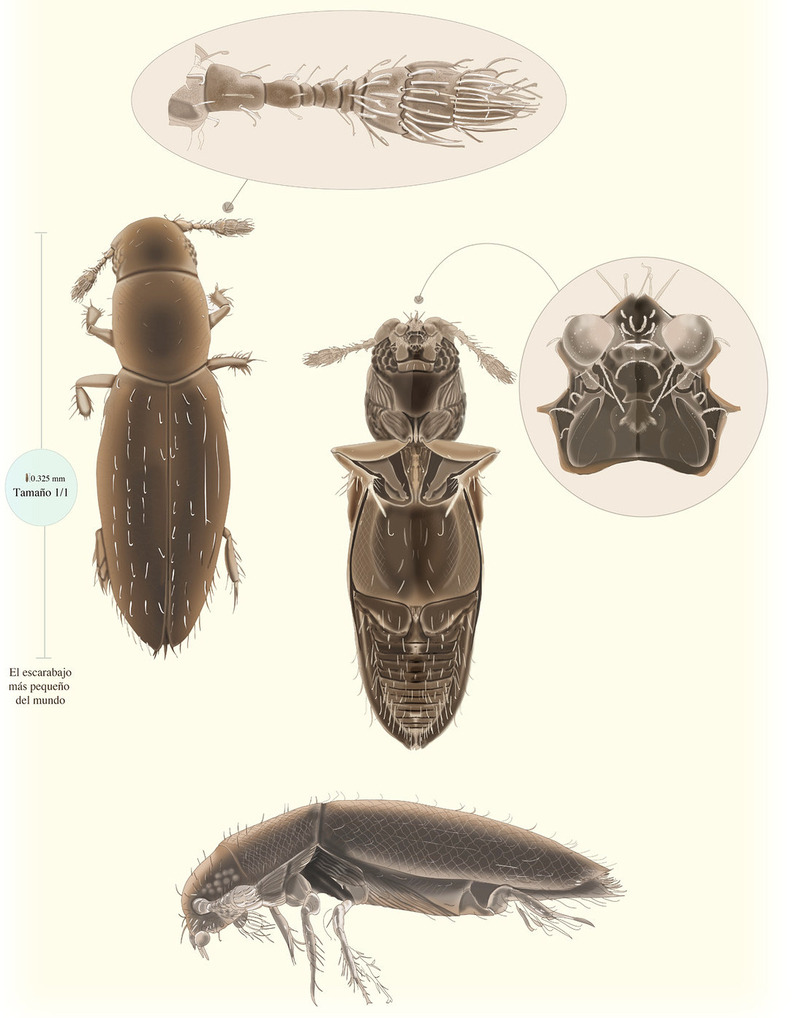When humans encounter insects, their reactions are often extreme - we might marvel at the beauty of a monarch butterfly, while a fast-running cockroach might make us feel disgusted. But did you know that many insects are actually too small to be seen with the naked eye? Because these tiny creatures are extremely small and difficult to study, we know very little about these miniature creatures. In fact, some insects are even too small to be photographed. Today, we will take you to the world's smallest insects and see the wonders of these tiny creatures!


The Midget Moth (Enteucha acetosae) has a wingspan of only 2.54 cm, while the wingspan of ordinary moths is usually 22.86 cm.

While butterflies are usually associated with daytime activities, moths usually appear at night, so they are difficult to distinguish. However, they can be distinguished by their antennae - butterflies have a bulbous tip, while moths do not. The smallest moths belong to the family Nepticulidae and are known as dwarf or micro moths. Micro moths have a wingspan of only 2.54 cm, while regular moths typically have a wingspan of 22.86 cm. Their larvae feed on leaves and leave distinctive patterns on the leaves as they eat.

The Scarlet Dwarf Dragonfly is a very small dragonfly species with a wingspan of less than 2.54 cm and a body length of only about 17 mm. They are native to Japan, China and Southeast Asia, and can occasionally be found in Australia.


Despite its tiny size, it still has many similarities to its larger relatives, and even to the extinct Megaloneura. The Meganeura is one of the largest known insects, with a wingspan of up to 25 inches (71.12 cm), and lived during the Triassic period, about 300 million years ago. Like the Meganeura, the Scarlet Pygmy Dragonfly feeds on other insects.

The Western Pygmy Blue Butterfly is one of the smallest Lepidoptera, with a wingspan of just 1.27 cm. It is easily recognizable by the copper and dark blue markings at the base of its wings. This butterfly is found in North America, Hawaii, and parts of the Middle East.

Butterflies have been on Earth for more than 200 million years, with fossil evidence showing that their prehistoric ancestors fluttered among dinosaurs and even existed before pollen-rich flowers appeared on Earth. Despite mass extinctions and ice ages, butterflies have survived to this day, with more than 180,000 species in their family.

Microtityus Minimus Scorpion is often considered one of the most dangerous insects because of their ability to defend themselves from predators much larger than themselves, such as spiders. The poisonous stinger, strong chelicerae, and hard exoskeleton of the microtityus scorpion have evolved over more than 430 million years.

In 2014, researchers discovered the Microtityus minimus in the Greater Antilles, Dominican Republic. This scorpion is considered the smallest scorpion in the world, measuring just 11 mm when fully grown. Its tiny size makes its chelicerae and stinger look cute rather than intimidating. But don't let its size fool you, this tiny scorpion is a very fierce little creature!

Mantises have a long relationship with humans, from supernatural symbols in ancient Greek and Egyptian culture to inspiring Chinese poetry and two martial arts, they have been a favorite pet for many people.

The order Mantis includes more than 2,000 species, some of which can reach 8.89 cm when standing upright. However, the smallest mantis species, the dwarf mantis (Bolbe pygmaea), is only 1 cm (1 cm) long! It is native to Australia.

Mosquitoes are notorious for their itchy, painful bites. They are able to suck up to twice their body weight in blood and use a special trick to fly in and out silently, making them extremely difficult to detect. This makes them particularly dangerous in some areas because they are the culprit for spreading viruses and diseases.

Now, let's introduce the smallest mosquito on the planet: the Eranotaenia Iowii lowii), also known as the light-footed Iol mosquito, is only 2.5 mm long. Fortunately, it does not feed on human blood, but relies on their sense of hearing to find frogs and other amphibians to suck blood. These tiny mosquitoes are native to the southern United States, from Texas to Florida, and even North Carolina.

One of the smallest spiders in the world, the Patu Digua spider is found in Colombia and is less than 1/3 of a millimeter in size, even smaller than the tip of a pin! However, some people believe that there may be even smaller spiders.

For example, the female Anapistula caeculas from West Africa is only about 0.762mm long, which probably means that their males are smaller! Typically, male spiders are smaller than females due to sexual dimorphism (i.e., the two sexes differ in appearance).

The Nanaknihali fly (Euryplatea nanaknihali) is the smallest known fly species, measuring just 0.5mm or less.

These tiny flies lay their eggs on the heads of ants, and the hatched larvae feed on the ants' bodies, eventually killing them. Although this process may seem cruel, this method of reproduction is not uncommon among mantis flies.

The Mesawasella beetle (Scydosella musawasensis) is one of the smallest beetles in the world. It belongs to the family Ptiliidae and is the only species in the genus Scydosella.

It has a slender, oval body shape, with the smallest known individual being only 0.025 mm long and an average body length of 0.254 mm. It is not parasitic, but feeds on the spores of Brazilian fungi. It was first found in Nicaragua and later also in Colombia.

The fairyfly wasp (Dicopomorpha echmepterygis) is the smallest insect in the world, measuring just 0.139 mm in length. This parasitic wasp belongs to the order Hymenoptera, which includes ants, sawflies, bees, and wasps. They are found in a variety of habitats around the world, from moist rainforests to dry deserts.

The smallest species of fairyfly wasp, Dicopomorpha echmepterygis, is just 0.139 mm in length. If you thought Paramecium was small, this parasitic wasp will surprise you! These tiny insects have no wings or eyes, and only two tiny antennae. They eat the eggs of other insects from the inside during their larval stage. If you want to see this insect, you'll need to travel to places like Costa Rica, Hawaii, or Trinidad.
animal tags: insect
We created this article in conjunction with AI technology, then made sure it was fact-checked and edited by a Animals Top editor.